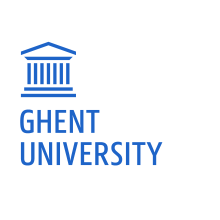Ghent University

Ghent University was founded in 1817. At that time, 16 members of the professorial staff educated 190 students in the fields of Arts, Law, Medicine and Sciences. In the period between 1870 and 1890, the university has undergone a major modernization of higher education, bringing many significant changes. Most notably, laboratory exercises and laboratory research work were introduced in this period. Throughout its history, Ghent University had three different languages of instruction. After Latin and French, Ghent University became the first institution in Belgium with Dutch as the official language of instruction in 1930. Over the past 200 years, Ghent University has counted many eminent scientists, ministers and even Nobel laureates among its staff and alumni. Ghent University consists of 11 faculties with 50 000 students and 15 000 employees. In Belgium, Ghent University is located in and around Ghent, Courtrai, Bruges and Ostend. We are also the first European university in Songdo, South Korea. Moreover, it consistently ranks among the top 100 universities in the world.
Sightseeing in Ghent
Ghent originated from Celtic settlements at the confluence of the rivers Scheldt and Lys and became one of the largest cities of northern Europe in the Late Middle Ages under the impulse of a flourishing wool industry, with approximately 50,000 people in 1300. Moreover, the flax and linen industry and the storage right of grain that Ghent acquired also contributed considerably to its prosperity. After a short Calvinist period, the city experienced a certain decline that only reversed towards the end of the 18th century, when the cotton industry made Ghent one of the first industrial cities on the European mainland. In December 1814, the Treaty of Ghent was signed, ending the US-British war and defining the border between the US and Canada. The Ghent city silhouette is dominated by 'the three towers', the Belfry Tower, the Saint Bavo's Cathedral (originally Saint John's Church) with the famous altarpiece the Adoration of the Mystic Lamb by the brothers Hubert and Jan van Eyck, and Saint-Nicholas Church. In 1817, Ghent University was founded. Today, it has 50,000 students, making Ghent a vibrant student city. Disciplines such as veterinary medicine, biotechnology, aquaculture, micro-electronics and history are world renowned.
Below is a list of some of Ghent's most popular sights. For more details click on the links below.
- Gravensteen ("The Castle of the Counts")
- Sint-Baafskathedraal ("St. Bavo’s Cathedral") with the world-famous Ghent Altarpiece
- The Ghent Belfry
- St. Nicholas' Church
Unique in Europe…and we’re not just saying that. Experience, taste and feel the vibrancy of Ghent: a surprisingly good deal. The CityCard Ghent gets you into ALL the top attractions in Ghent, including public transport at a ridiculously low price.